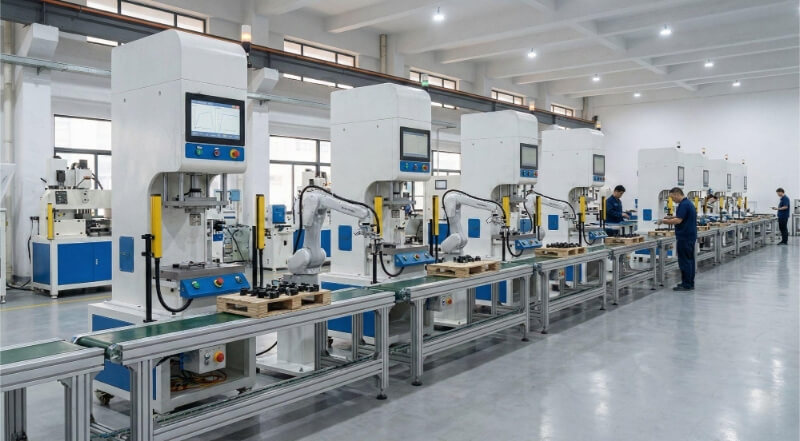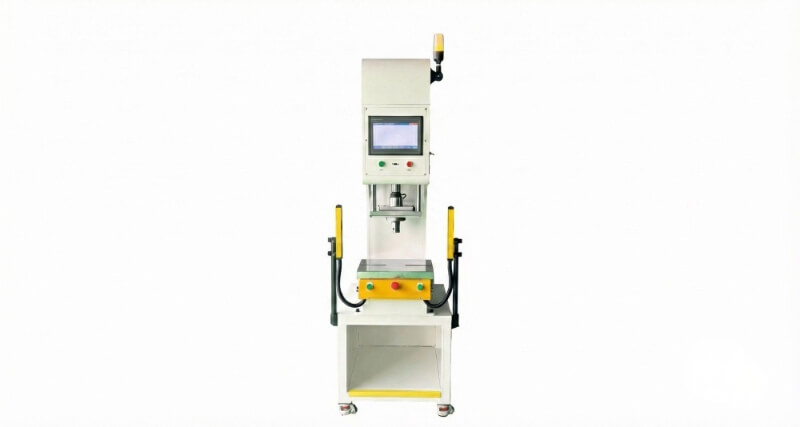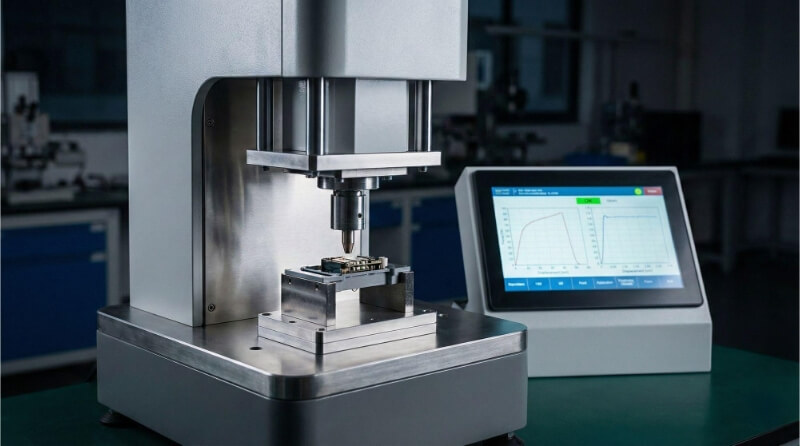Choosing suitable materials for CNC machining can be challenging. The wrong material can increase costs, poor product quality, and production delays. I understand these challenges firsthand as someone deeply involved in sheet metal fabrication. The key to success lies in knowing your material options and their properties. This knowledge helps in making informed decisions and achieving optimal results.
Finding the perfect material for your CNC machining project doesn’t have to be complicated. By understanding the specific needs of your project and matching them with the properties of various materials, you can ensure efficiency, quality, and cost-effectiveness. Let’s explore some popular CNC machining materials and their applications.

Metals used in CNC Machining
Aluminium
Properties and Benefits
Aluminum is lightweight and strong. Aluminum is lightweight and robust. It is versatile because it conducts electricity and heat well. The ease of anodizing allows for improved surface protection and aesthetic appeal.
Common Applications
Aluminum is widely used in the automotive, aerospace, and electronic industries. Aluminum is ideal for engine components, aircraft structures, and electronic enclosures.
Steel
Types of Steel: Carbon, Alloy and Stainless
Steel is available in many forms. Each has its unique characteristics. Carbon steel is robust and cost-effective. Alloy steel is a mixture of metals that enhance properties such as strength and hardness. Stainless steel is resistant to corrosion and can be used in harsh environments.
Properties and Benefits
Steel is known as a durable, strong, and versatile material. Alloy steel performs better under challenging conditions. Carbon steel is best for applications that require high strength. The corrosion-resistant properties of stainless steel make it the ideal material for applications that require a long lifespan.
Common Applications
Steel is used in many industries. Carbon steel is used in heavy machinery and construction. Alloy steel is used in industrial equipment and automotive parts. Stainless steel is used in kitchenware, medical devices, and marine applications.
Titanium
Properties and Benefits
Titanium is solid and lightweight. It is resistant to corrosion and can withstand high temperatures. This makes it an ideal material for extreme environments. Titanium is also biocompatible.
Common Applications
In aerospace, titanium is used for turbine blades and aircraft frames. It’s also used in the medical field for surgical instruments and implants.
Copper and Brass
Property and Benefits
Copper is known as a conductor of heat and electricity. Copper is also antimicrobial and resistant to corrosion. Brass is an alloy of copper and zinc that offers good machinability and a distinctive look.
Common Applications
Copper is widely used in electrical components and heat exchangers. Brass is used for musical instruments, fittings, and decorative items.
Plastics used in CNC Machining
ABS (Acrylonitrile Butadiene Styrene)
Properties and Benefits
ABS is an impact-resistant, rigid plastic. It is a tough plastic that resists impact. Thermoforming ABS is easy, and it comes in a variety of colors. Lightweight yet strong, it is suitable for many applications.
Common Applications
ABS is used widely in automobile parts, consumer electronic housings, toys, and other products. Due to its affordability and ease of processing, ABS is also used for 3D printing and prototypes.
Polycarbonate
Properties and Benefits
The high impact resistance of polycarbonate and its transparency are well-known. It is resistant to UV radiation and can withstand temperatures up to 450 degrees. It is lightweight and has good electrical insulation qualities.
Common Applications
Polycarbonate is used for electronic components, safety equipment, and automotive components. Thanks to its durability and clarity, it’s used in optical applications such as lenses and transparent panels.
Nylon
Properties and Benefits
Nylon is a highly durable, strong plastic that has excellent wear resistance. It is a robust and durable plastic with low friction. Nylon has a high thermal stability and is resistant to a wide range of chemicals. It can be used for countless applications.
Common Applications
Due to its high strength and low friction, nylon is often used for bushings, gears, and bearings. You can also find it in consumer products like textiles, sports equipment, and industrial machinery.
POM (Polyoxymethylene Acetal or Polyoxymethylene)
Properties and Benefits
POM (Acetal) is a low-friction, high-strength plastic with excellent dimensional stability. It is ideal for precision parts because it has good chemical resistance and is also easy to machine. POM’s low moisture absorption, high stiffness, and good chemical resistance are also well-known.
Common Applications
POM is commonly used for precision engineering components like gears, bearings, and fasteners. Also, it’s used in consumer products such as zippers, kitchen utensils, and electrical insulators. Its properties make this material suitable for exact and durable applications.

Composites and other materials
Carbon Fiber Reinforced Polymers
Property and Benefits
CFRP is renowned for its outstanding strength-to-weight ratio. It is incredibly stiff and lightweight, with excellent resistance to fatigue. CFRP is also a good conductor of heat and electricity.
Common Applications
CFRP is used extensively in the aerospace and automotive industries to make structural components with high strength and low mass. It is also used in sports equipment such as tennis rackets and bicycles.
Fiberglass
Property and Benefits
Fiberglass is made of glass fibers, resin, and other materials. It is flexible, strong, and resistant to moisture and corrosion. Fiberglass is lightweight, cost-effective, and relatively strong. It’s a good choice for a variety of applications.
Common Applications
Fiberglass is used to construct boats, automobile bodies, and tanks for storage. Fiberglass is also used to make building materials like roofing, wall paneling, and sports equipment such as surfboards and skiing.
Ceramics
Property and Benefits
Ceramics are brittle, rigid materials with high heat and wear resistance. Ceramics are resistant to extreme temperatures and electrically insulating. They are, therefore, suitable for specific technical applications.
Common Applications
Ceramics can be used for applications that require high thermal stability and wear resistance, like aerospace components, industrial machines, and medical devices. Ceramics are also used in electronic products such as substrates, insulators and consumer goods such as kitchenware and cutlery.
Quick View: CNC Machining Materials Chart
This table describes the most common materials that are used for CNC machining.
| Material Type | Name | Grade |
|---|---|---|
| Metal | Aluminum | Al 1050 |
| Metal | Aluminum 1050 | Al 1050 |
| Metal | Aluminum 1060 | Al 1060 |
| Metal | Aluminum 2024 | Al 2024 |
| Metal | Aluminum 5052-H11 | Al 5052-H11 |
| Metal | Aluminum 5083 | Al 5083 |
| Metal | Aluminum 6061 | Al 6061 |
| Metal | Aluminum 6082 | Al 6082 |
| Metal | Aluminum 7075 | Al 7075 |
| Metal | Aluminum-bronze | Al + Br |
| Metal | Aluminum-MIC-6 | Al MIC-6 |
| Metal | Aluminum-QC-10 | Al QC-10 |
| Metal | Brass | Cu + Zn |
| Metal | Copper | Cu |
| Metal | Copper-beryllium | Cu + Be |
| Metal | Copper-chrome | Cu + Cr |
| Metal | Copper-tungsten | Cu + W |
| Metal | Phosphor bronze | Cu + Sn + P |
| Metal | Stainless-steel 303 | SS 303 |
| Metal | Stainless-steel 304 | SS 304 |
| Metal | Stainless-steel 316 | SS 316 |
| Metal | Stainless-steel 410 | SS 410 |
| Metal | Stainless-steel 431 | SS 431 |
| Metal | Stainless-steel 440 | SS 440 |
| Metal | Stainless-steel 630 | SS 630 |
| Metal | Low Carbon Steel | 1018 Steel |
| Metal | Medium Carbon Steel | 4130 Steel |
| Metal | Medium Carbon Steel | 4140 Steel |
| Metal | High Carbon Steel | 1095 Spring Steel |
| Plastic | ABS | ABS, ABS- high temp, ABS- antistatic |
| Plastic | ABS + PC | ABS + PC |
| Plastic | HDPE | HDPE, PEHD |
| Plastic | Nylon 6 | PA6 |
| Plastic | Nylon 6 + 30% Glass Fill | PA6 + 30% GF |
| Plastic | Nylon 6-6 Polyamide | PA66 |
| Plastic | Polycarbonate | PC |
| Plastic | Polycarbonate-Glass Fill | PC + GF |
| Plastic | Polycarbonate+30% Glass Fill | PC + 30% GF |
| Plastic | Polyether ether ketone | PEEK |
| Plastic | Polyetherimide | PEI |
| Plastic | Polyetherimide + 30% Glass Fill | Ultem 1000 + 30% GF |
| Plastic | Polyetherimide + Ultem 1000 | PEI + Ultem 1000 |
| Plastic | Polyethylene | PE |
| Plastic | PET | PET |
| Plastic | PMMA-Acrylic | PMMA-Acrylic |
| Plastic | POM | POM |
| Plastic | PPS | PPS |
| Plastic | PPS + Glass Fill | PPS + GF |
| Composite | PTFE | PTFE |
Factors Influencing CNC Machining Materials Selection
Mechanical Properties
Strengthening Your Body
When selecting materials for CNC cutting, strength is critical. This determines the maximum load that a material will withstand before it deforms.
Hardness
The hardness of a material is measured by its resistance to surface deformation. The more complex the material, the more resistant it is to wear. This makes them ideal for frictional and abrasive applications.
Ductility
The ability to deform a material plastically without breaking it is called elasticity. High-ductility materials can tolerate significant deformation.
Thermal Properties
Heat Resistance
Heat resistance measures a material’s ability to resist high temperatures without losing properties. It is essential for parts exposed to high temperatures, like engine components or industrial machines.
Thermal Expansion
The thermal expansion of a material is its rate of expansion when heated. Materials with low thermal expansion are preferred in environments where temperature fluctuates because they maintain dimensional stability.
Electrical Property
Conductivity
Electrical conductivity is a measure of the material’s ability to conduct electricity. Electrical components and wiring are made from materials with high conductivity, like copper and aluminum.
Insulation
Insulating materials are essential to protect electronic components and ensure safety. These materials are used for insulators, housings, and other electrical isolation applications.
Chemical Resistance
Corrosion resistance
The ability to resist corrosion is the ability to withstand reactions such as electrochemical or chemical. This property is essential for components exposed to harsh environments, such as chemical processing or marine applications.
Chemical Stability
Chemical stability is the ability of a material to resist chemical reactions. Chemically stable materials are required for applications that involve exposure to aggressive chemicals and solvents.
Cost considerations
The cost of materials is an essential factor when selecting the suitable material. For project feasibility, it is important to balance performance with budget constraints. High-performance materials offer superior properties but are often more expensive. It is essential to evaluate the cost-benefit relationship before making a decision.
CNC Machining Material Challenges & Solutions
Machinability
Metals
Challenge: Metals such as steel, titanium, and aluminum are machinable to varying degrees, which affects tool wear and finish.
Solution:
- For harder metals, use carbide or ceramic tooling.
- Optimize the cutting speed and feed for each metal type.
- Use coolants that are suitable to reduce heat and improve machineability.
Plastics
Challenge: Heat buildup can cause plastics to melt, deform, or poorly finish.
Solution:
- To achieve clean cuts, use high-speed steel or carbide tools.
- Keep cutting at high speeds and ensure proper cooling to avoid melting.
- Sharpen your tools to reduce heat and deformation.
Surface Finish
Challenge: Achieving smooth surfaces can be challenging due to material characteristics, tool wear, and incorrect machining parameters.
Solution:
- Use fine-grit abrasives or polishing compounds after machining metals.
- Make sure the tools you use are sharp and suitable for the material that is being machined.
- Adjust machining parameters like speed, feed, and cutting depth to optimize surface finish.
- Coolants can be used to reduce heat and prevent the material from sticking to the tool. This can hurt the finish.
Tool Lifespan and Wear
Challenge: Tool Wear is a significant issue in CNC Machining, which affects precision, surface finish, and productivity.
Solution:
- High-quality materials that are resistant to wear, such as ceramic, carbide, or diamond-coated tooling, should be used.
- Use the correct coolant system to reduce tool wear and manage heat.
- Replace and inspect your tools regularly to ensure they remain in good condition.
- Avoid overly aggressive settings that accelerate tool wear.
- Adjust the tool path to match the wear pattern of the different materials.
Conclusion
Selecting suitable CNC Machining Materials will determine the success of your project. You can improve the durability and quality of your product by carefully evaluating the project requirements and understanding the material properties.
Do you need a reliable sheet metal parts manufacturer? Shengen is the place to go. We specialize in sheet metal laser cutting, bending, surface finish, and CNC Machining. Reach out to Shengen Today and seek help from professionals!
FAQs
What is the best material for my CNC project, and how do I select it?
Consider your project’s mechanical, electrical, chemical, and thermal requirements when choosing the material. Consider the surface finish you want and weigh it against cost and availability. Consult CNC experts to help you make the right choice.
What are the advantages of using plastics or metals for CNC machining?
Metals are lightweight, corrosion-resistant, and versatile, making them suitable for weight-sensitive applications. Plastics are lightweight and corrosion-resistant. They’re also versatile and suitable for applications that require low weight and harsh environments.
What is the impact of material selection on CNC machining costs?
The raw material price, machining time, and tool wear influence the cost of materials. Materials with excellent machinability are cheaper, but metals such as titanium can be more expensive.
What are the latest materials used in CNC machining today?
These materials include composites, such as CFRP, high-performance plastics, like PEEK or PEI, and metal alloys. These materials provide enhanced strength and chemical and thermal stability for specialized applications.
More Resources:
Types of Metals for CNC Machining – Source: Xometry
Surface Finish in CNC Machining – Source: HUBS
Hey, I'm Kevin Lee

For the past 10 years, I’ve been immersed in various forms of sheet metal fabrication, sharing cool insights here from my experiences across diverse workshops.
Get in touch

Kevin Lee
I have over ten years of professional experience in sheet metal fabrication, specializing in laser cutting, bending, welding, and surface treatment techniques. As the Technical Director at Shengen, I am committed to solving complex manufacturing challenges and driving innovation and quality in each project.




